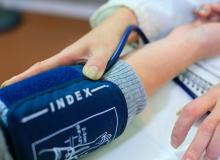Diabetes, with its increasing incidence trend, has become one of the epidemic diseases that seriously threatens human health. According to data released by the World Diabetes Federation in 2007, there are currently 39.8 million diabetic patients in China, and it is expected to reach 59.3 million by 2025, of which 90% to 95% are type 2 diabetes patients; cardiovascular and cerebrovascular diseases, kidney and retina, etc. Microvascular disease is the most important complication of type 2 diabetes and the main cause of death and disability.
Looking back at previous clinical studies on diabetes, two questions that need to be answered urgently are before us: How low should the blood sugar levels of patients with type 2 diabetes drop? Can intensive glycemic control reduce vascular complications? At present, the International Diabetes Federation Treatment Guidelines and my country Diabetes Guidelines recommend that patients with type 2 diabetes should control glycated hemoglobin below 6.5%. However, this is mainly a result of speculation based on epidemiological data. There are currently no confirmed results of drug intervention, so the medical community New evidence-based medical research is eagerly awaited to provide more solid and powerful evidence for clinical treatment strategies. On June 7, 2008, Beijing time, the American Diabetes Association (ADA) announced the ADVANCE study, the largest diabetes treatment study to date, involving 11,140 patients with type 2 diabetes from 20 countries at the 68th Annual Meeting.
The famous New England Journal of Medicine also published the results of the study. The ADVANCE study targets patients with type 2 diabetes with cardiovascular risk factors, with a treatment goal of lowering the glycosylated hemoglobin value below 6.5%, to evaluate whether intensive blood sugar control can further reduce various vascular complications. After 5 years of observation, this study confirmed that the intensive hypoglycemic program based on gliclazide sustained-release tablets (Damecon sustained-release tablets) achieved safe glucose lowering and significantly reduced the composite endpoint of major macrovascular and microvascular The risk reaches 10%. This endpoint includes the most common complications of diabetes such as cardiovascular death and diabetic nephropathy events. Renal lesions are reduced by 21% and proteinuria is reduced by 30%. This is also the main predictor of reduction in cardiovascular death.
At the same time, the incidence of severe hypoglycemia in the study was only 1/3 of the UKPDS study, which also proves the good safety of this treatment regimen. Therefore, patients can fully benefit from the intensive anti-diabetic regimen based on Dameikang extended-release tablets. The results of the ADVANCE study provide an important basis for formulating future diabetes treatment strategies and are therefore landmark.
It is worth noting that one-third of the patients in this study are from China, which will undoubtedly provide more sufficient and powerful evidence for China's diabetes treatment strategy. The latest China Type 2 Diabetes Prevention and Treatment Guidelines issued by the Diabetes Branch of the Chinese Medical Association clearly states that the goal for diabetic patients to control blood sugar is to have glycated hemoglobin lower than 6.5%, which is the target blood sugar of the ADVANCE study. Therefore, the intensive hypoglycemic regimen based on Damikang sustained-release tablets used in the ADVANCE study is safe and effective and deserves further promotion.

